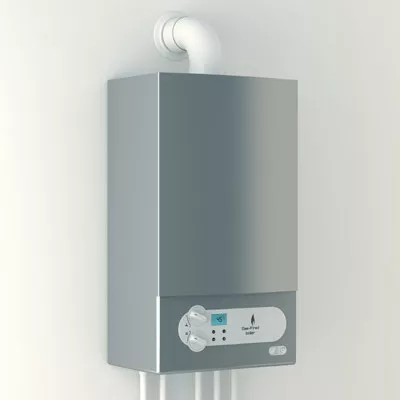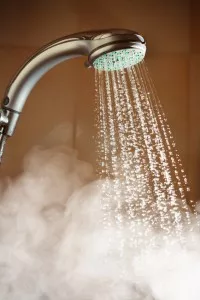You just started exploring the potential of buying a tankless water heater and you stumbled on a couple terms you don’t understand:
- Condensing tankless water heater
- Non-condensing tankless water heater

You probably get the tankless part. These water heaters don’t store water in a tank for you to dip into when you need it. They heat the water when you need it, so you expend exactly the amount of energy you need and nothing more.
You already know you want a condensing unit. Here’s why you should stop renting and opt for ownership.
The fuel in your tankless water heater creates steam or water vapour as a byproduct. The steam or vapour cools and condenses on a surface.
The condensation water is acidic and will corrode all kinds of common home appliance materials.
A non-condensing tankless water heater will vent these hot byproducts, which cool down outside the unit. This stuff is hot, with temperatures around 150 degrees C , and must be vented through heat resistant, corrosion resistant channels. That means:
- $$$$$$$
When heat is vented, energy is wasted. You spend money to burn the fuel and you should get as much of that energy as possible in the form of heat.
Non-condensing units have efficiencies around 80%, meaning around 20% of the heat is wasted through the venting of this condensation.
We bet you can guess why condensing tankless water heaters are so popular, now.

Condensing tankless water heaters recycle that extra heat and only vent the vapour when it’s no longer useful for the heating process, somewhere around 38 degrees C.
Since the vapour from a condensing tankless water heater vent is much cooler, it doesn’t require the same expensive venting material. A standard PVC pipe is often used, as it can easily withstand the heat and the corrosiveness of the vapour.
Since the condensing unit captures and reuses the residual exhaust heat, you get efficiency in the area of 98%.
The exhaust gases are cooled inside the unit and the condensation water is collected now inside the unit as well. The heat exchanger takes care of this, and has to be of higher quality and non-corrosive material inside the condensing tankless water heater to withstand the corrosiveness. It is made using a similar material to the venting channels in a non-condensing unit.
The collected condensation water also has to be neutralized before draining. This is done through a filtration system inside the unit.
What does this all mean?
The two types of tankless water heater are built differently but use similar materials, so you don’t necessarily save money at the point of purchase by choosing one model over the other. However, a condensing tankless water heater achieves greater fuel efficiency, a significant source of long term savings.
Efficiency is the primary factor most buyers look for in a new tankless water heater, and a condensing unit is the most efficient available.
Get in touch with your local ClimateCare member and find the most efficient upgrade for your hot water system today.





